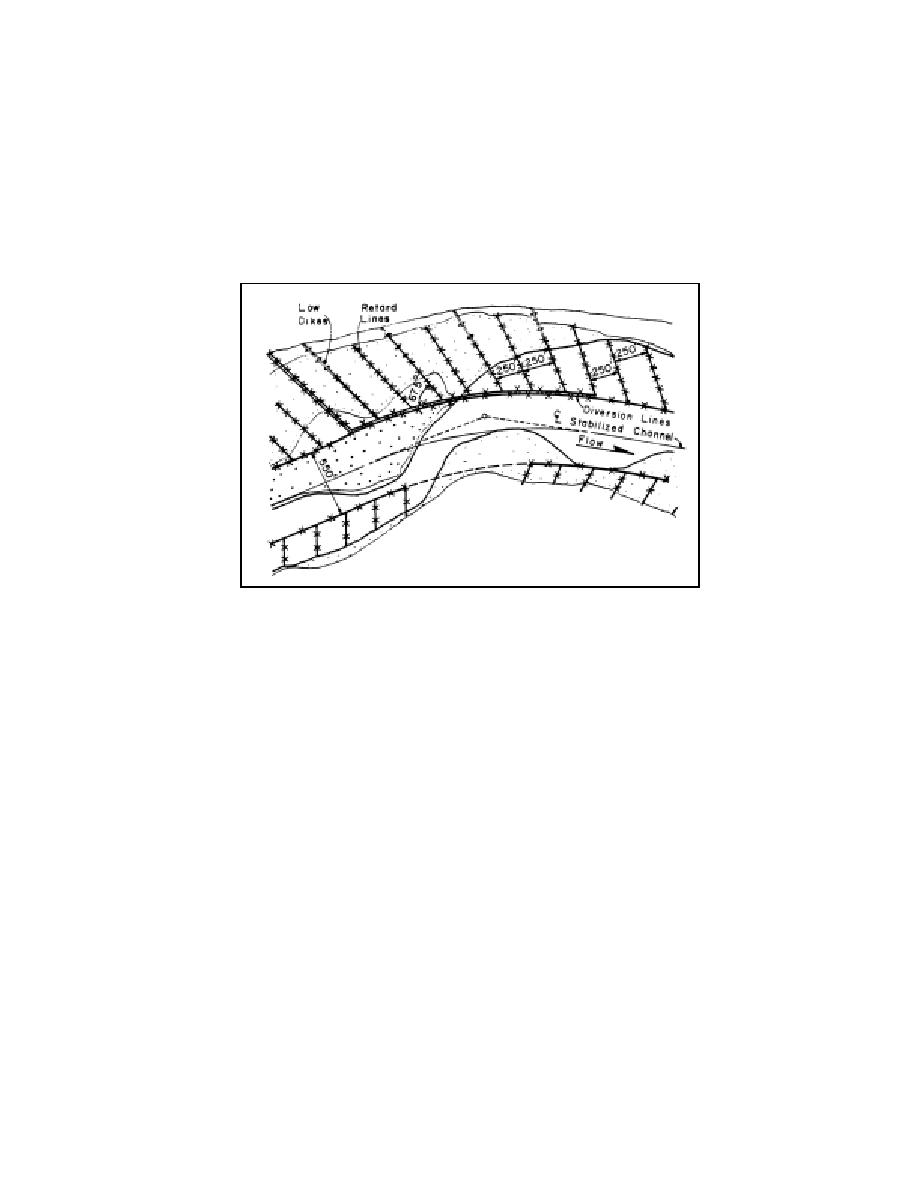
6.4.7 Jetties
The purpose of a jetty field is to add roughness to a channel or overbank area to train the main
stream along a selected path. The added roughness along the bank reduces the velocity and
protects the bank from erosion. Jetty fields are usually made up of steel jacks tied together
with cables. Both lateral and longitudinal rows of jacks are used to make up the jetty field as
shown in Figure 6.8.
Figure 6.8. Typical jetty-field layout.
The lateral rows are usually angled about 45 to 70 degrees downstream from the bank. The
spacing varies, depending upon the debris and sediment content in the stream, and may be 15
to 75 m (50 to 250 ft) apart. Jetty fields are effective only if there is a significant amount of
debris carried by the stream and the suspended sediment concentration is high.
When jetty fields are used to stabilize meandering rivers, it may be necessary to use jetty fields
on both sides of the river channel because in flood stage the river may otherwise develop a
chute channel across the point bar. A typical layout is shown in Figure 6.8.
Steel jacks are devices with basic triangular frames tied together to form a stable unit. The
resulting framework is called a tetrahedron. The tetrahedrons are placed parallel to the
embankment and cabled together with the ends of the cables anchored to the bank. Wire
fencing may be placed along the row of tetrahedrons. In order to function well, there must be
considerable debris in the stream to collect on the fence and the suspended sediment
concentration must be large so that there will be deposition behind the retard. Various forms of
steel jacks may be assembled. Two types are shown in Figure 6.9. Tiebacks should be
spaced every 30 m (l00 ft) and space between jacks should not be greater than their width.
6.16




 Previous Page
Previous Page
